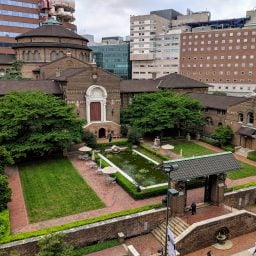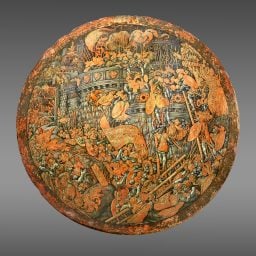The University of Pennsylvania has announced plans to repatriate a group of human skulls, some of which belonged to enslaved peoples, that were unethically collected by a 19th-century scientist to support his white supremacist views.
Some 1,300 crania of various ages are included in the Penn Museum’s Morton Collection, named after the Philadelphia-based physician who amassed them, Samuel Morton.
In 2019, a group of students at the university discovered that 53 skulls in the collection came from individuals enslaved in Havana, Cuba, while two others belonged to enslaved Americans in Philadelphia.
The crania were removed from view and the museum subsequently formed a committee tasked with investigating the collection and the ways in which the objects might be responsibly re-buried or repatriated.
The results of the committee’s research were made public this week alongside an action plan for returning the objects “to their descendants and communities of origin whenever possible.”
This marks the first of three steps in the museum’s repatriation process.
“An initial phase of rigorous evaluation was critical for ensuring an ethical and respectful process around repair,” Christopher Woods, the museum’s director, said in a statement. The museum will now work with “local communities to understand their wishes for repatriation.”
“It is time for these individuals to be returned to their ancestral communities, wherever possible, as a step toward atonement and repair for the racist and colonial practices that were integral to the formation of these collections,” the director added.
Amassed during the 1830s and ‘40s, Morton’s collection of skulls represent a wide sampling of geographies and range in date from ancient Egyptian times to the 19th century.
The once-prominent physician used the objects as evidence of discredited theories that “Europeans, especially those of German and English ancestry, were intellectually, morally, and physically superior to all other races,” according to the Penn Museum’s website.
The crania entered the museum in 1966 on a long-term loan from the Academy of Natural Sciences, where Morton worked more than a century prior. Legal ownership of the collection was transferred to the Penn museum in 1997.
The repatriation process proposed by the Morton Collection Committee is modeled after the Native American Graves Protection and Repatriation Act (NAGPRA) of 1990, a law requiring the consultation of Native peoples when moving human remains, funerary objects, sacred objects, and objects of cultural patrimony.
The museum will also form a repatriation committee responsible for all repatriations which do not fall under NAGPRA, and create a new full-time faculty position for a BIPOC bioanthropologist.
Woods said the institution will now reassess its “practices of collecting, stewarding, displaying, and researching human remains.”
“There is no ’one size fits all’ approach to handling repatriation and reburial in any circumstance,” he said. “Each case is unique and deserves its own consideration. This is incredibly sensitive work. And while we all desire to see the remains of these individuals reunited with their ancestral communities as quickly as possible, it is essential not to rush but to proceed with the utmost care and diligence.”









